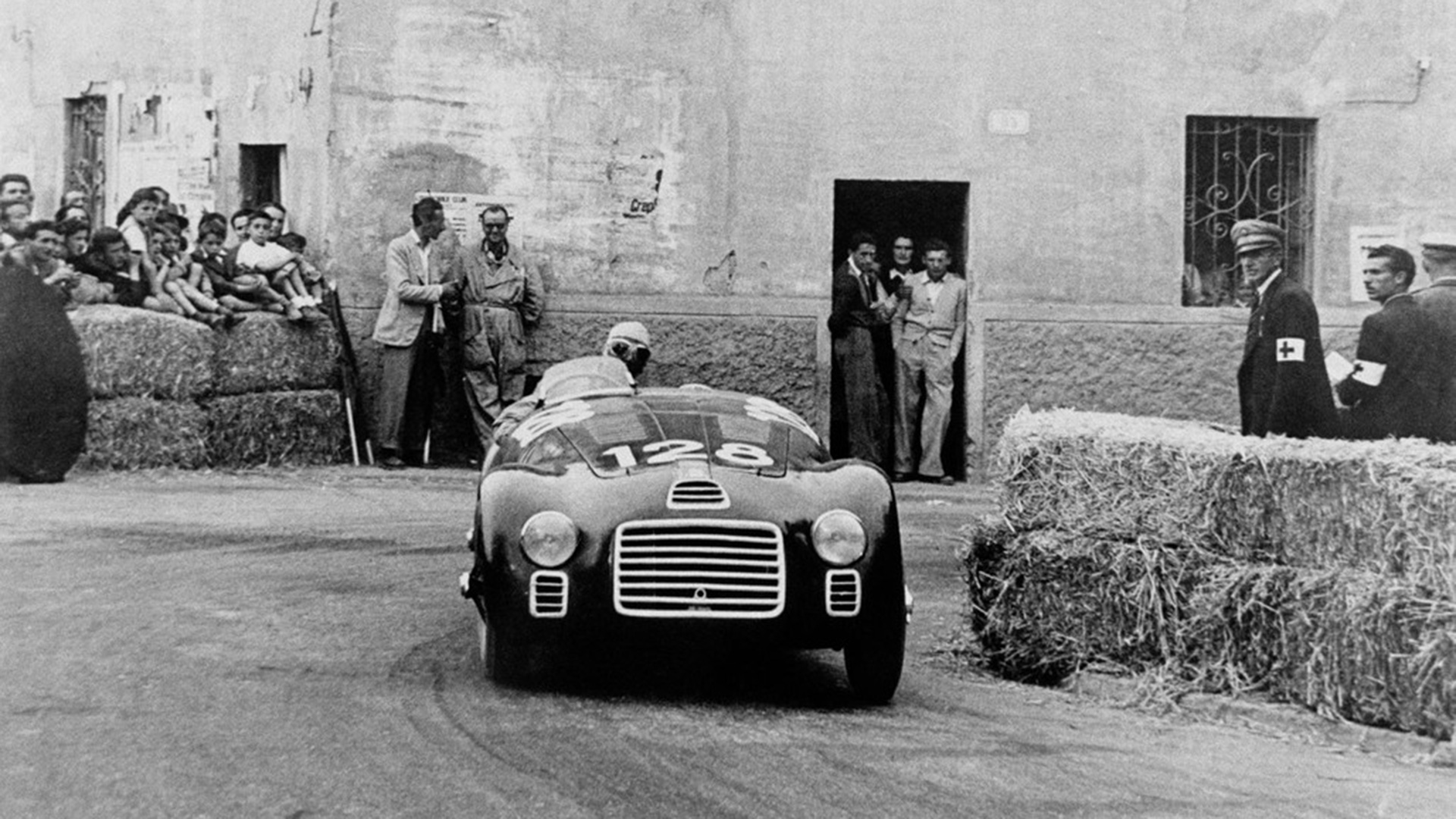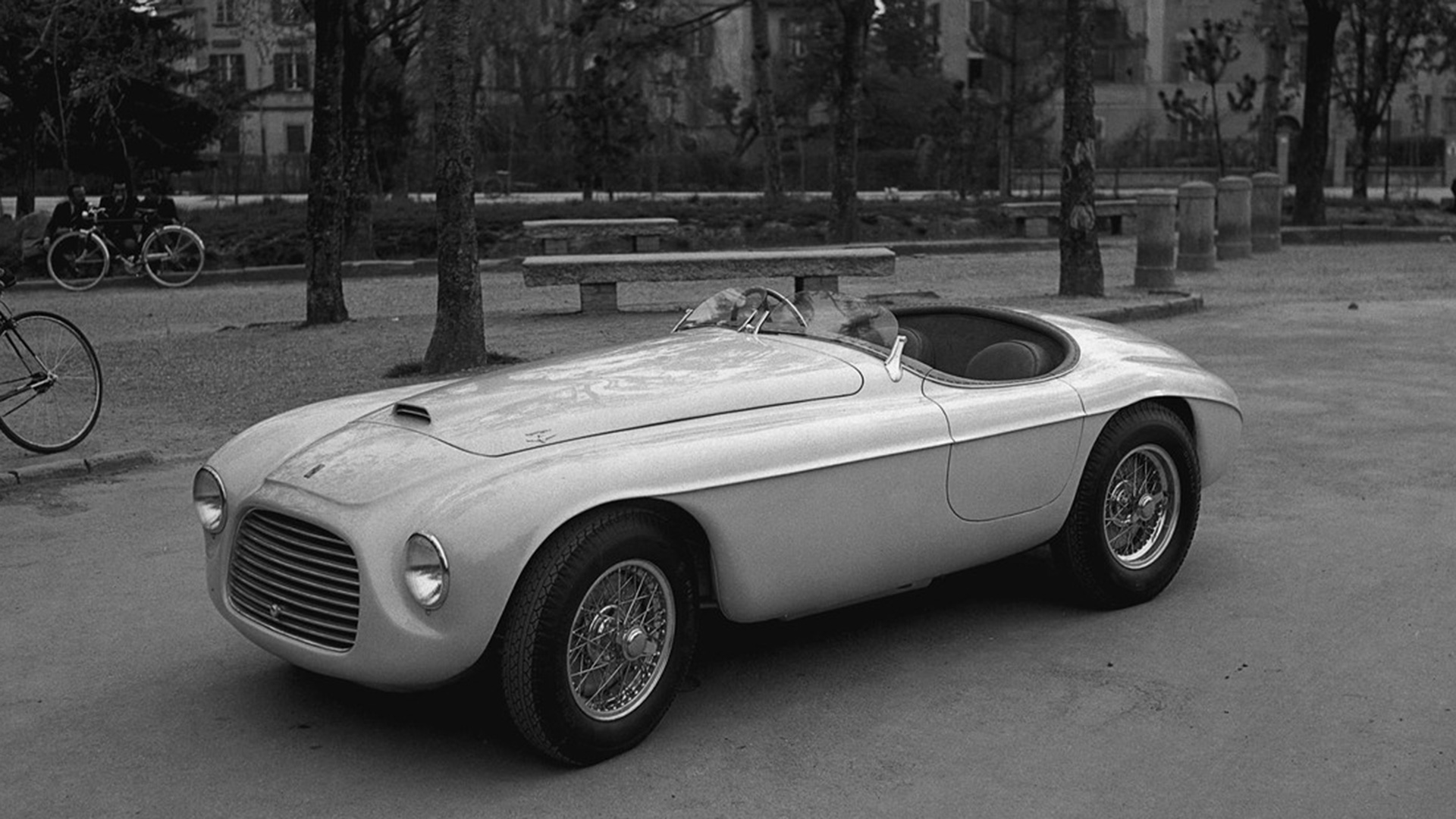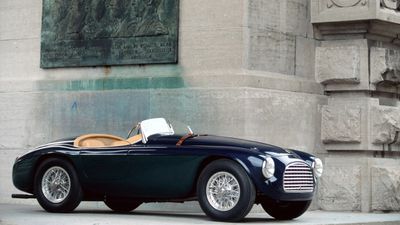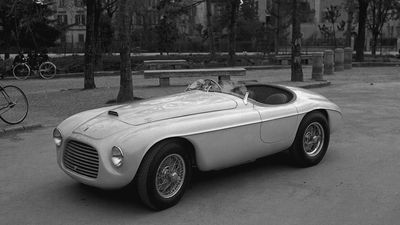



Launch of 166 MM
THE BARCHETTA AT TURIN MOTOR SHOW




Launch of 166 MM
On September 15 1948, Ferrari unveiled a car at a motor show for the very first time.

The presentation at Turin was the culmination of a dream in a way. Having been a driver, team manager and racing car constructor, Enzo Ferrari was now the owner of his own car company, launching a small-series model at an illustrious international show. The car in question was the 166 MM. The MM in its name stood for Mille Miglia, a race won the previous May by Clemente Biondetti and Giuseppe Navone in the Allemano-bodied 166 Berlinetta.
The 166 MM was, of course, destined to make automotive history. Not merely for its sporting successes but, first and foremost, because it ushered in a whole new type of car, the Barchetta. This moniker, meaning little boat, was bestowed on it by the press because of its shape. From that moment onwards, the term would be used to describe all open-top sports prototypes. The 166 MM was a very important car for Ferrari, because it embodied so many expectations. While clearly a very fast, powerful vehicle its soft, simple lines also lent it a unique elegance and grace.
The 166 MM, in fact, set the blueprint for Maranello’s future road cars. It was the first of its kind and Enzo Ferrari was well aware of that fact. The versatile sports prototypes had proved themselves capable of winning on circuits of all kinds – permanent, city, dirt track. They were now, however, ready to step into the limelight at other prestige international events. Concours d’Elegance, for instance, were starting to gain popularity, becoming an important avenue both for meeting new clients and selling cars customised to suit each owners’ tastes and requirements. Many of the customers were privateer drivers who bought the 166 MM in its racing set-up to field in various competitions. Others, however, were simply well-heeled drivers who opted for the road-going version, often happily also specifying various modifications to the exterior and the cabin. Ferrari wanted to apply the same approach to other international motor shows, and was eager to launch the car at what was one of the world’s most important events - Turin was also home to various car marques and coachworks. For the 166 MM Touring Superleggera’s body, Ferrari turned to the Milanese coachworks that had invented the eponymous Superleggera construction system, which had already proved its worth in the aeronautics industry. The patented method involved fixing aluminum alloy panels directly to a small-diameter steel tubular spaceframe. As a result, the chassis and bodywork formed a single, homogenous unit, providing good structural rigidity and anticipating the weight-bearing chassis concept that would be introduced years later. The 166 MM’s clean, simple forms also proved exceptionally aerodynamically efficient. It had a very low dry weight of just 650 kg too, but its V12 engine unleashed 140 bhp and its fuel tank held 90-litres. Just 25 Touring Superleggera-bodied 166 MMs were built. One was purchased by Giovanni Agnelli and was his first Ferrari.